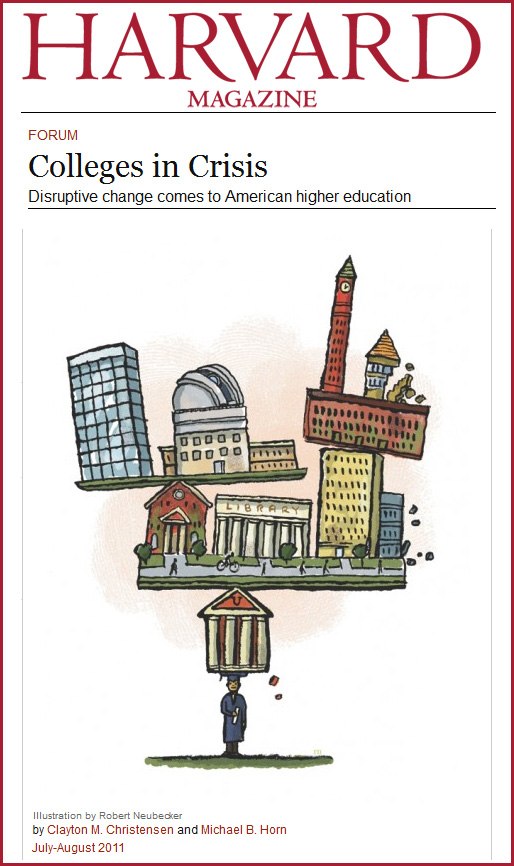Excerpt (emphasis DSC):
Surveys of the American public and of more than 1,000 college and university presidents, conducted this past spring by the Pew Research Center in association with the Chronicle of Higher Education, revealed significant concerns not only about the costs of such education, but also about its direction and goals.
More fundamentally, the business model that has characterized American higher education is at—or even past—its breaking point. Many institutions are increasingly beset by financial difficulties, and the meltdown since 2008 is but a shadow of what is to come. Undergraduate tuition has risen dramatically: at a 6.3 percent annual clip for nearly the last three decades—even faster than the much-decried 4.9 percent annual cost increases plaguing the healthcare industry. The full increase in the price of higher education has actually been hidden from many students and families over the years because gifts from alumni, earnings from private university endowments, subsidies from state tax revenues for public universities, and federal subsidies for students have been used to mitigate some costs. But universities are exhausting these mechanisms.
…
A Thriving, Disruptive Innovation
Just at the moment when these challenges to established higher education have arisen and compounded, another group of universities has arisen whose financial health is strong and enrollments have been booming. And yet the brands of these schools are weak and their campuses far from glamorous; sometimes the campuses are even nonexistent from the perspective of students, as online learning has largely driven their growth. How could this upstart group be so successful when the rest of higher education is treading water at best?









